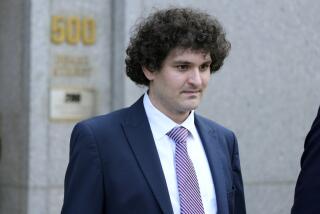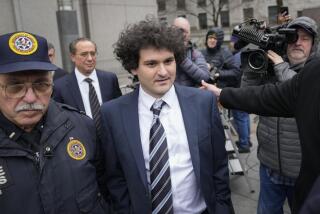A tough message for Bernard Madoff’s victims
Bernard Madoff’s colossal fraud cost investors nearly $65 billion in lost principal and earnings. This week, a federal appeals court ruled that much of the lost money is irretrievable because it never really existed to begin with. The ruling helps clarify the protection that federal law provides investors against unscrupulous brokers and dealers. In short, they’re protected if their accounts are drained surreptitiously, but not necessarily if they’re filled fictitiously. It’s a tough message for many of Madoff’s victims, who were in no position to see through his sophisticated deception. But given that investing in the stock market is by its nature speculative, it’s the right one.
Congress enacted the Securities Investor Protection Act in 1970 to help Wall Street switch from printed securities squirreled away in investors’ safe-deposit boxes to electronic ones managed by registered broker-dealers. To help persuade investors to trust the new system, the act created a fund, financed by a tax on broker-dealers, to preserve investors’ “net equity” even if the investment company that held their electronic shares went belly up.
After Madoff’s fraud was exposed, many of his victims sought reimbursement for all the shares listed on their final account statements. But Irving Picard, the trustee appointed to liquidate Madoff’s company, decided to pay back only the cash they’d sent Madoff, minus any of their withdrawals. He also filed claims against more than a thousand Madoff customers who had withdrawn more cash than they’d invested.
A group of investors sued, arguing that the point of the 1970 law was to let investors trust the account statements they received from their brokers in lieu of printed securities. On Tuesday, however, the U.S. 2nd Circuit Court of Appeals upheld Picard’s approach. The court found that the “final statement” method may be appropriate when broker-dealers misappropriate funds that a customer sends them for a specific purchase. But the evidence shows that Madoff never made the trades he claimed to be making to build up his customers’ investments, and couldn’t possibly have filled his customers’ accounts with the securities he claimed to be buying.
The ruling means that Madoff’s investors will wind up no better off than had they hidden their money in a mattress, and possibly worse if they’d spent some of the supposed earnings. But requiring the fund to cover the fanciful gains that Madoff arbitrarily assigned would unfairly benefit some investors at others’ expense, and turn Madoff’s machinations into windfalls. As the 2nd Circuit notes, the Securities Investor Protection Act was intended to protect investors’ property in the hands of broker-dealers. Unfortunately for Madoff’s investors, the only property he ever really held was their cash, which he evidently never invested in actual securities.
More to Read
A cure for the common opinion
Get thought-provoking perspectives with our weekly newsletter.
You may occasionally receive promotional content from the Los Angeles Times.






